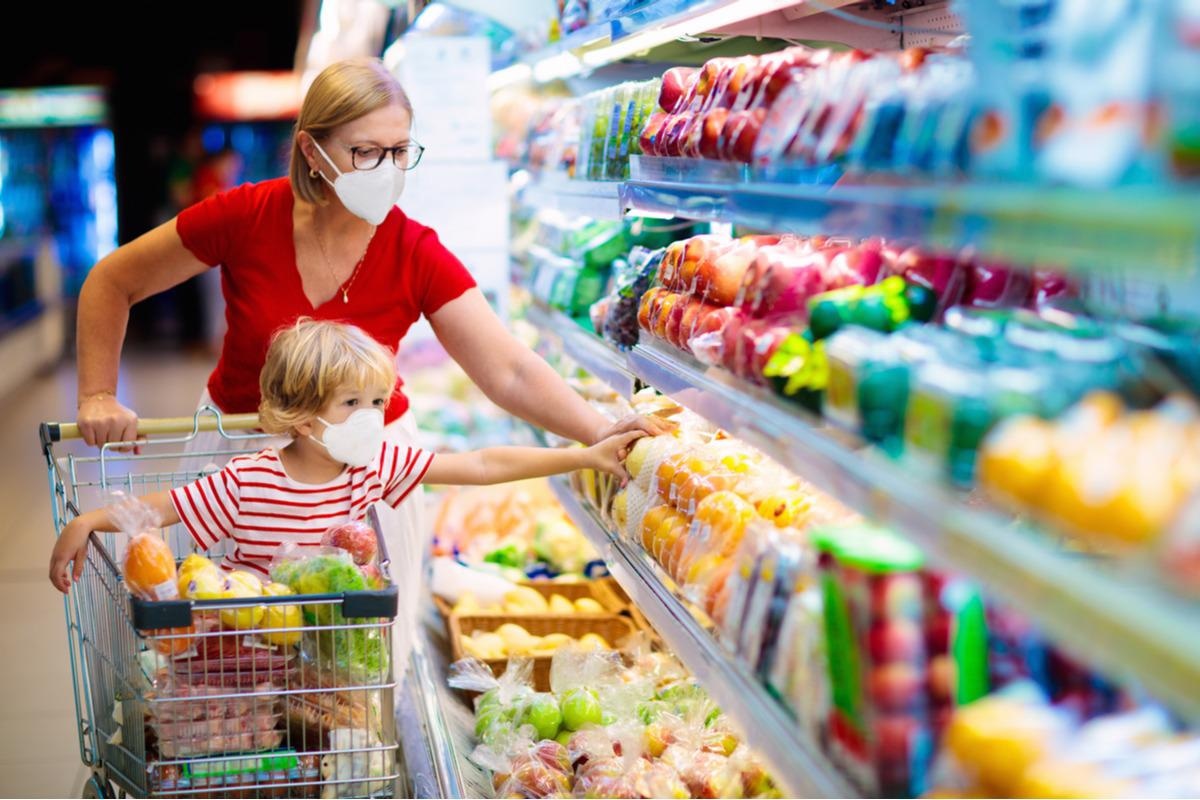When the coronavirus disease 2019 (COVID-19) first emerged, many governments issued advice to their citizens to help them avoid catching the disease – washing their hands, social distancing, and wearing masks in public – but the advice on items entering the household often varied.
 Study: SARS-CoV-2 Remains Infectious on Refrigerated Deli Food, Meats, and Fresh Produce for up to 21 Days. Image Credit: FamVeld/Shutterstock
Study: SARS-CoV-2 Remains Infectious on Refrigerated Deli Food, Meats, and Fresh Produce for up to 21 Days. Image Credit: FamVeld/Shutterstock
This was most obvious with food shopping, and many consumers opted to wash every piece of food that entered their house wherever possible.
Now, researchers from the Virginia Polytechnic Institute have been investigating the survival times of the virus on various foods.
The study
The researchers chose to inoculate the surface of food samples with 1×10^4 PFU in multiple droplets, slightly less than the number of copies of SARS-CoV-2 that are generated with a typical cough. The virus was recovered immediately after inoculation in order to understand how much virus could be reclaimed from each food. Following this, the virus was incubated for five different lengths of time – 1 hour, 24 hours, 7 days, 14 days and 21 days – at 4C.
Three different types of foods were chosen to represent the standard fare that can be brought from a delicatessen (deli) – roasted turkey for cooked meats, swiss cheese representing cheeses, and salami for more processed and seasoned meat. The virus on the turkey showed no significant reduction until day 7, and infectious virus could be recovered from the turkey for the full length of the study. The virus that could be recovered from the cheese had been significantly reduced by 24 hrs, but like the turkey SARS-CoV-2 was still present and infectious at the end of the study. Salami showed far more rapid reduction in viral levels, with the concentration reduced 2 log by 24hr, and completely absent by day 14.
Following this, the researchers selected items that are often consumed raw – tomatoes, grapes, and avocado (both shell and pulp). Tomatoes and grapes displayed a very similar pattern, with the levels of virus present remaining consistent until day 7, before steadily reducing by over 2 log by day 14. However, infectious levels of the virus were still present at day 21. The virus did not survive very well on the avocado shell, with levels dropping consistently until they were undetectable on day 14 – and it survived even worse on the avocado pulp, dropping below the level of detection by the seventh day.
The next foods the researchers tested were raw beef steak and pork chops, ground beef and pork, a plant-based meat alternative and oysters. Unfortunately, the virus survived extremely well on almost all samples. The pork chops and ground pork showed the least reduction in viral levels, with consistently high survival throughout the study. The beef steak, ground beef and plant-based meat alternative all supported the virus until day 14, and could still be recovered from the oysters by day 21.
As most people tend to cook meat before consuming it, the researchers then tested the survival of SARS-CoV-2 following its inoculation into beef patties that were then cooked to three different temperatures mimicking rare (51.2C), medium (62.5C) and well-done (71.7C) temperatures.
As expected, the higher temperatures killed the virus better, with no recoverable viable virus present on the well-cooked burger. However, infectious viruses could be recovered from the other two patties – potentially indicating that they could carry risk of infection.
To help other scientists compare these results to more common methods of pathogen detection (swabbing, nucleic acid extraction and PCR assays), the researchers selected eight foods to represent the three different categories and performed qRT-PCR assays to determine the viral genome copy number at two different incubation points, immediately following incubation and the first incubation time that showed at least a 1 log reduction in viral titre. This was 24 hours for avocado pulp, 7 days for ground beef, the plant-based alternative and oysters, and 14 days for tomatoes and grapes. As the avocado pulp was effective at reducing the viral titre significantly immediately, the researchers chose the time points of 0 hours and 24hours. They found that the RNA copy was normally 2-3 times higher than the infectious viral titre – although the two results were not always directly consistent.
Conclusion
The authors have successfully shown the effective lengths at which SARS-CoV-2 can survive on certain foods, which can likely act as a model to predict how well it could survive on many others.
The information they have gathered could help consumers decide how best to protect themselves when purchasing and eating food and could help inform supermarkets, grocers and other companies that sell food, helping them avoid spreading the disease.
- Jia M, Taylor TM, Senger SM, Ovissipour R, Bertke AS. (2022). SARS-CoV-2 Remains Infectious on Refrigerated Deli Food, Meats, and Fresh Produce for up to 21 Days. Foods. doi: https://doi.org/10.3390/foods11030286 https://www.mdpi.com/2304-8158/11/3/286
Posted in: Medical Research News | Medical Condition News | Disease/Infection News
Tags: Coronavirus, Coronavirus Disease COVID-19, Cough, covid-19, Food, Genome, Meat, Nucleic Acid, Pathogen, RNA, SARS, SARS-CoV-2, Virus

Written by
Sam Hancock
Sam completed his MSci in Genetics at the University of Nottingham in 2019, fuelled initially by an interest in genetic ageing. As part of his degree, he also investigated the role of rnh genes in originless replication in archaea.
Source: Read Full Article